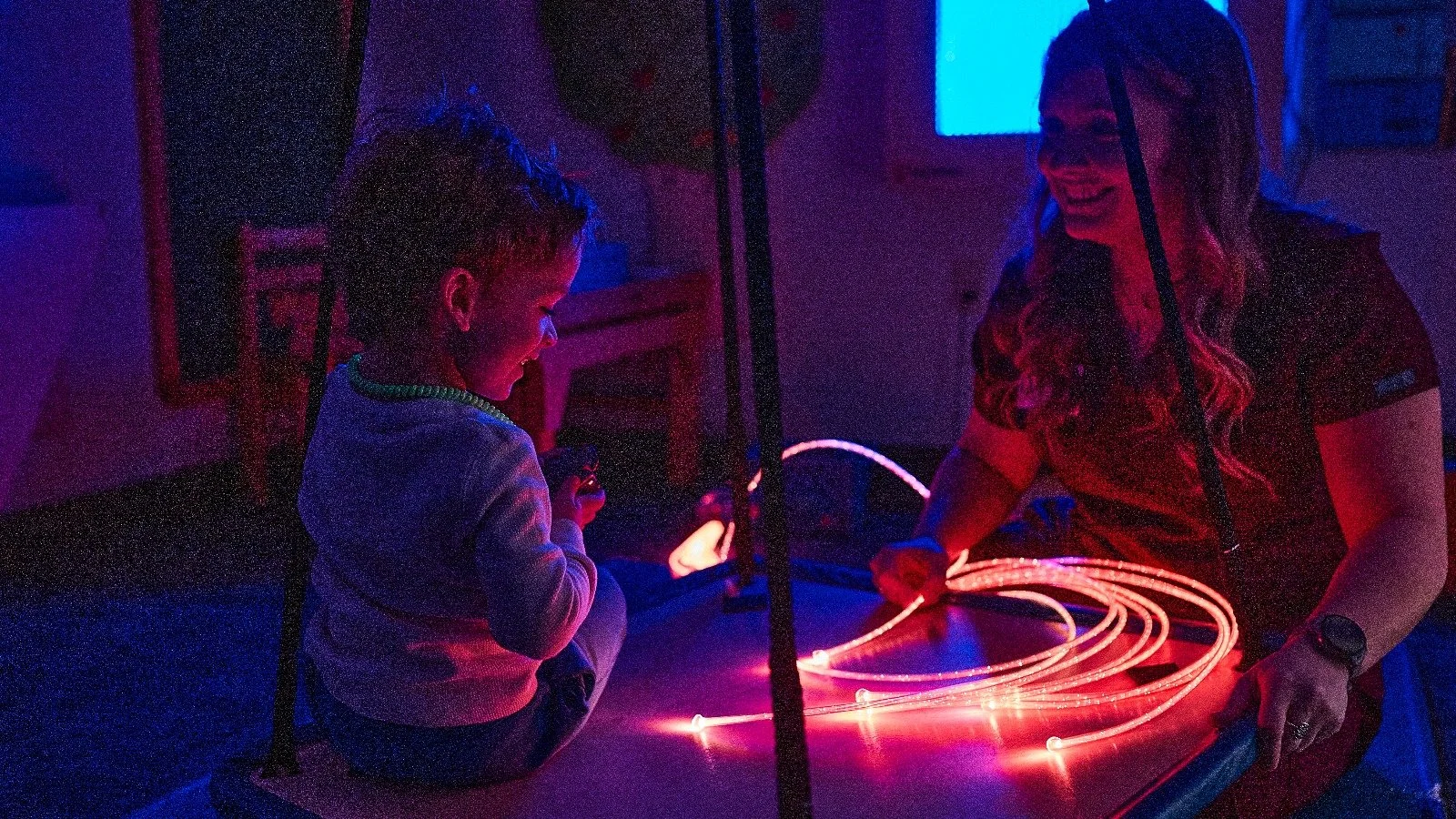WHS’ Children’s Therapy Center Offers Hope to Families of Children with ASD
By Andrew Wilson
When your child has been diagnosed with or exhibits signs of autism spectrum disorder, it may be difficult to know where to turn for help. The Washington Health System (WHS) Children’s Therapy Center offers hope to both children diagnosed with autism spectrum disorder and their parents.
The National Institute of Mental Health defines autism spectrum disorder as a neurological and developmental disorder that affects how people interact with others, communicate, learn, and behave. According to the Diagnostic and Statistical Manual of Mental Disorders (DSM-5), people with autism often have difficulty with communication and interaction with other people, restricted interests and repetitive behaviors, and symptoms that affect their ability to function in school, work, and other areas of life.
“Some communication issues that a child diagnosed with autism might have include difficulty understanding and using language effectively,” said Julie Legters, the speech therapy coordinator at WHS’ Children’s Therapy Center. “This can include issues with paying attention, following directions, understanding expectations, and displaying or reading socially expected emotions/facial expressions.”
This doesn’t mean that children with autism can’t learn. Legters said that some of the children she has seen have incredible knowledge of certain subjects or hobbies, like trains, and others have organizational abilities that they are compelled to follow.
“In my decades of experience as a speech/language pathologist, I have learned to incorporate these creative behaviors into my therapy sessions in order to meet the child where he or she is,” she said. “There is a vast spectrum associated with the diagnosis of autism. As more research has been completed, we have seen that many of these children have used their different way of thinking to solve problems, to create incredible strategies, and to form new patterns of procedures.”
She said there are numerous ways to help a child with autism communicate effectively. If speech is too difficult or not possible, some children may be able to use sign language and gestures to indicate what he/she wants. Pictures can be used to help the child point to what is needed, or there are speech-generating devices that use pictures and words to allow the child to be more independent.
“Some families start with working on “yes/no” and ask questions to determine what the child is trying to say,” Legters said. “Some children are verbal, some are verbal with difficulty conveying thoughts and feelings effectively, and some are non-verbal and rely on augmented ways to communicate.”
In addition to working with the children, the WHS Children’s Therapy Center can provide parents with strategies or methods to help supplement the therapy provided and improve communication at home and in the community.
“Some children will receive work to practice at home, such as worksheets to produce sounds or the speech/language pathologist (SLP) will provide a model or demonstration of how to build communication via vocabulary, following directions, pronoun use, or language structures and ask the family to play with the child in that way during the interval between sessions,” Legters said. “Parents are encouraged to ask questions and are given full support through our entire approach.”
Legters also cautions parents that just because a child may have difficulty with speech or learning to communicate, it doesn’t always indicate autism.
“Many children have difficulty learning the rules of grammar, the use of pronouns, verb tenses, and other speech and language issues that continue to develop as a child learns and uses words,” she said. “That does not mean the child is presenting with autism.”
The best approach for a parent with concerns about their children is to ask questions and seek help early.
“The earlier the intervention, the greater the impact,” Legters said. “This is true of children with speech and language issues associated with autism and/or suspected autism. If speech and language is not developing in a typical manner, a child should be evaluated for the possibility of a disorder that can be improved upon and/or treated.”
At WHS Children’s Therapy Center, speech/language pathologists along with occupational and physical therapists are trained to provide assessment to any child with communication deficits. To begin therapy, parents complete a medical and family history for the child, and the child participates in a 1-on-1 evaluation process with a therapist. From there, selected tests are completed, results compiled, and a full communication evaluation report is created. This report often touches on receptive language, expressive language, articulation, phonological processing, voice, fluency, motor programming, oral-motor structures and functions, hearing, eating and swallowing. A therapeutic speech related diagnosis is determined, and recommendations are based upon each individual child’s needs.
“Most children receive services twice weekly for 30-minute sessions,” Legters said. “We also see children once a week, monthly, and/or as needed. Most of our children are seen individually while others may be recommended for group therapy to improve social interaction with peers. These determinations are generated with the child in mind, while also collaborating with the families and other therapists to create the most effective treatment for the child’s needs.”
WHS’ Children’s Therapy Center, the largest and most comprehensive therapy program in Washington County, has two facilities (McMurray and Washington) to help make it easier for your child to receive therapy. They also utilize the therapeutic pool equipment at WHS Wilfred R. Cameron Wellness Center. The Center only treats pediatric patients age 0-18, so the equipment is geared for children and includes physical therapy gyms, private treatment rooms, sensory rooms and more. The Center treats a variety of children’s issues, including autism spectrum disorder, developmental motor or speech delays, sensory processing disorders, cerebral palsy, attention deficit disorder, hearing loss, orthopedic injuries, and many others.
Visit whs.org/ctc for more information.

